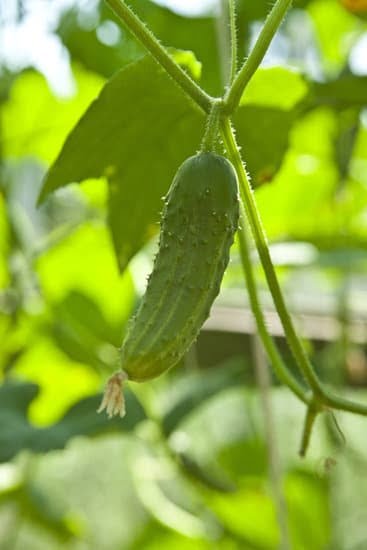Are you looking for fresh gardening ideas around trees to transform your outdoor space? Designing and landscaping around trees can enhance the beauty of your garden while protecting the health of your existing trees. In this article, we’ll explore how to create a flourishing and visually appealing garden around trees, from selecting the right plants to maintaining tree health and enhancing visual appeal.
When it comes to gardening around trees, it’s important to strike a balance between aesthetics and practicality. Choosing the right plants that are shade-tolerant and complement the existing flora is essential for creating a cohesive look in your tree garden. Additionally, incorporating layers such as groundcovers, shrubs, and perennials can add depth and texture to your landscape.
In addition to plant selection, hardscaping elements like paths, mulch, and decorative stones can contribute to the overall design of your tree garden. These elements not only add visual interest but also help protect the tree roots and create an inviting environment for both people and wildlife. So whether you’re a seasoned gardener or just getting started, there are plenty of creative ways to make your tree garden thrive.
Choosing the Right Plants
When it comes to gardening around trees, choosing the right plants is essential for creating a beautiful and thriving tree garden. Since trees can create shade that limits the sunlight reaching the ground, it’s important to select shade-tolerant plants that can thrive in this environment. Here are some options for plants that are well-suited for tree gardens:
- Hostas: These leafy perennials come in a variety of sizes and colors, making them a great choice for adding visual interest to tree gardens.
- Astilbes: Known for their feathery plumes of flowers, astilbes are perfect for adding pops of color to shady areas around trees.
- Ferns: With their delicate fronds, ferns add a touch of elegance to tree gardens and are well-adapted to low light conditions.
In addition to these options, there are many other shade-tolerant plants that can thrive in tree gardens. By carefully selecting these plants, you can create a lush and beautiful garden space that complements the existing trees.
It’s important to consider the different layers of your tree garden when choosing plants. Groundcovers, shrubs, and perennials all play an important role in creating a diverse and visually appealing landscape. By incorporating a variety of plant types, you can add depth and texture to your tree garden while also providing food and shelter for beneficial insects and wildlife.
In addition to their aesthetic value, these plants contribute to the overall health of the ecosystem within your tree garden. By selecting shade-tolerant options that work well together, you can create a sustainable and thriving environment around your trees. Overall, thoughtfully selecting shade-tolerant plants is key to creating a vibrant and healthy garden around trees.
Creating Layers
When it comes to gardening ideas around trees, incorporating layers of plants can create a visually appealing and functional garden space. By carefully selecting groundcovers, shrubs, and perennials, you can create a lush and diverse landscape that complements the natural beauty of the trees in your garden.
Choosing Groundcovers
Groundcovers are an essential part of any tree garden, as they not only add visual interest but also help to retain soil moisture and suppress weed growth. When choosing groundcovers for gardening around trees, opt for shade-tolerant varieties such as ajuga, hosta, or lamium. These low-growing plants form a beautiful carpet of foliage while providing a protective layer over the soil.
Incorporating Shrubs
Shrubs are another important element in creating layers within a tree garden. They add height, structure, and seasonal interest to the landscape. When selecting shrubs for gardening around trees, consider shade-loving options like hydrangeas, azaleas, or ferns. These plants not only thrive in shady conditions but also provide an attractive backdrop for other plantings.
Selecting Perennials
Incorporating perennials into the garden design around trees adds variety and color throughout the year. Look for shade-tolerant perennials such as astilbe, bleeding heart, or hosta to create pockets of color and texture beneath the canopy of the trees. These long-lived plants will return year after year, adding beauty and interest to your tree garden.
By carefully selecting and incorporating groundcovers, shrubs, and perennials into your tree garden design, you can create a dynamic and visually stunning landscape that enhances the natural beauty of the trees while adding diversity to your outdoor space.
Utilizing Hardscaping
When it comes to gardening ideas around trees, hardscaping plays a crucial role in enhancing the overall aesthetic and functionality of the space. By incorporating paths, mulch, and decorative stones, you can create a visually appealing and practical tree garden that complements the natural beauty of the trees.
Paths
One way to maximize the usability of your tree garden is to add pathways that meander around the base of the trees. These paths not only provide easy access for maintenance and enjoyment of the garden but also serve as a design element that can define different areas within the space. Choose materials such as gravel, stepping stones, or brick pavers that complement the surrounding landscape and ensure proper drainage to prevent water accumulation around the trees.
Mulch
Applying mulch around the base of trees offers several benefits for both the trees and the overall garden. Mulch helps retain soil moisture, regulates soil temperature, suppresses weed growth, and adds an attractive finishing touch to the garden bed. Organic mulches like wood chips or shredded leaves are ideal for improving soil fertility and promoting earthworm activity around tree roots.
Decorative Stones
Incorporating decorative stones into your tree garden can add texture, color, and visual interest to the landscape. Strategic placement of stones can create focal points or borders within the garden while also reducing erosion around tree trunks. Additionally, decorative stones can act as a barrier against foot traffic near tree roots, preventing soil compaction and damage to the trees.
By utilizing hardscaping elements such as paths, mulch, and decorative stones in your tree garden design, you can create a well-balanced outdoor space that not only enhances the beauty of your trees but also provides an inviting environment for relaxation and enjoyment.
Preparing the Soil
Planting in the root zone of trees requires careful consideration and preparation to ensure the health and vitality of both the tree and the new plants. The root zone, also known as the drip zone, is the area beneath a tree’s canopy where rainwater drips from its leaves to the ground. This is where the majority of the tree’s roots are located, making it important to take certain steps when planting in this area.
First, it’s crucial to choose plants that can coexist harmoniously with the tree’s roots. Shade-tolerant groundcovers, such as hostas or ferns, are excellent choices for planting around trees. They not only add visual interest but also help maintain soil moisture and prevent weed growth. When choosing shrubs and perennials for this area, be sure to select varieties that are adapted to shade and avoid disturbing the tree’s roots during planting.
Secondly, proper soil preparation is key when planting around trees. Loosening or digging into the soil near a tree can damage its delicate root system. Instead, gently work organic matter like compost or mulch into the top layer of soil using a hand trowel or small gardening fork. This will improve soil structure and fertility without disrupting existing roots.
Lastly, when adding decorative elements such as paths or mulch around trees, be mindful not to pile these materials up against the trunk. Creating barriers around trees with hardscaping can lead to moisture retention against the trunk which may cause rot or disease. It’s important to leave space for air circulation and movement within these areas while still beautifying your tree garden.
| Plant Type | Examples |
|---|---|
| Groundcover | Hostas, Ferns |
| Shrubs | Rhododendrons, Azaleas |
| Perennials | Astilbe, Bleeding Heart |
Maintaining Tree Health
When creating a garden around trees, it is crucial to prioritize the health and well-being of the tree itself. This involves taking measures to avoid causing any harm to the tree trunks and roots. By following these tips, you can ensure that your tree garden not only looks beautiful but also promotes the long-term health of the trees in your yard.
- Plant with Care: When adding plants to the base of a tree, be mindful of the roots and try not to disturb them. Choose small plants that are less likely to compete with the tree for nutrients and water.
- Mulch Wisely: Utilize mulch around the base of the tree to conserve moisture and control weeds, but make sure not to pile it against the trunk. Keep a few inches of space between the mulch and the trunk to prevent excess moisture from causing rot.
- Avoid Compaction: Be conscious of heavy foot traffic or equipment near tree roots, as compacted soil can suffocate them. Consider creating defined pathways around trees using stepping stones or other hardscaping materials.
Taking these precautions will help maintain healthy trees while still allowing for a thriving garden space around them. By considering these factors in your gardening ideas around trees, you can create a visually appealing landscape without compromising the well-being of your established trees.
Enhancing Visual Appeal
When it comes to creating a visually appealing tree garden, adding color and texture is key. The right combination of flowers, foliage, and hardscaping can really make your tree garden stand out. One of the best gardening ideas around trees is to incorporate a variety of plants with different colors and textures to create an eye-catching landscape.
When selecting plants for your tree garden, consider choosing a mix of annuals, perennials, and flowering shrubs that will bloom at different times throughout the growing season. This will ensure that there is always something in bloom, providing continuous pops of color. Additionally, incorporating plants with varying leaf shapes and textures can add depth and visual interest to your garden beds.
In addition to plant selection, utilizing hardscaping elements such as decorative stones, mulch, and paths can also enhance the visual appeal of your tree garden. These elements can help define the space around the tree while adding contrasting textures to the overall design. Placing decorative stones or mulch around the base of the tree can also help retain moisture and protect the roots from temperature fluctuations.
| Plants | Colors | Textures |
|---|---|---|
| Tulips | Various shades of pink and purple | Smooth petals |
| Lavender | Purple | Fragrant foliage |
Remember that when adding color and texture to your tree garden, it’s important to take into account factors like sunlight exposure, soil type, and water requirements for each plant. By carefully planning and selecting plants that complement each other in terms of color and texture, you can create a visually stunning tree garden that will be the envy of all your neighbors.
Tips for Maintaining a Healthy and Sustainable Tree Garden
In conclusion, gardening around trees not only enhances the beauty of your outdoor space but also provides a unique opportunity to create a thriving ecosystem. By choosing the right plants, creating layers, utilizing hardscaping, and preparing the soil, you can transform the area around your trees into a vibrant and dynamic garden. However, it is important to keep in mind that maintaining tree health should be a top priority when designing and caring for these garden spaces.
One way to ensure the continued health of your trees is by avoiding damage to their trunks and roots. This can be achieved by carefully planning and implementing hardscaping elements such as paths, mulch, and decorative stones. Additionally, incorporating groundcovers, shrubs, and perennials can help create a balanced and sustainable tree garden that supports biodiversity while minimizing competition for resources.
Moreover, maintaining a healthy and sustainable tree garden involves ongoing care and attention. Regular watering, weeding, and fertilizing are essential tasks for keeping your plants thriving.
It’s also important to periodically assess the condition of your tree garden and make adjustments as needed to promote optimal growth. By following these tips for maintaining a healthy and sustainable tree garden, you can enjoy a beautiful outdoor space that enhances the natural beauty of your trees while supporting an array of plant life.
Frequently Asked Questions
What Is the Best Thing to Put Around Trees?
The best thing to put around trees is mulch. Mulch helps retain moisture, regulates soil temperature, and prevents weed growth. It also adds nutrients to the soil as it decomposes.
How Do You Garden Around a Tree?
When gardening around a tree, it’s important to be mindful of the tree’s roots. Avoid digging too close to the trunk, as this can damage the tree. Instead, plant shade-loving plants and flowers that can thrive in the dappled light.
What Is the Best Edging for Around a Tree?
The best edging for around a tree is one that is flexible and allows for the natural growth of the tree’s roots. Rubber or plastic landscape edging can conform to the shape of the tree while providing a barrier to prevent grass or weeds from encroaching on the trunk.

Welcome to my gardening blog! I am passionate about plants and enjoy sharing my knowledge and experiences with others. In this blog, I will write about everything related to gardening, from tips on how to get started to updates on my own garden projects.





